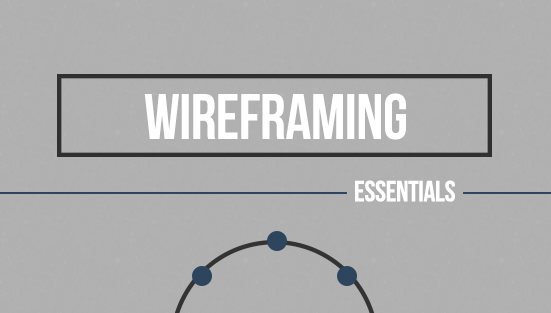You might think of wireframing as something like a brainstorm or a simple mock up, but the truth is that it can be much more than that. Sure, wireframes are a great way to get your ideas onto paper and visualize what’s in your mind. However, wireframing is, in its essence, a tool for driving conversations, for pushing progression and encouraging collaboration. To many people, well-executed wireframes lie at the core of the digital signage.
The key to a good wireframe is letting go of your preconceived ideas before you begin. You need to commit to creativity and be willing to explore new concepts, possibilities, and ideas throughout the process. Be open and honest with both yourself and your client, and, most importantly, let the collaborative ideas drive the wireframe development.
1. Use color sparingly
When used right, color can be a powerful tool that invokes emotion. Most of the time, though, color can only be distracting. You might have excellent ideas for design elements down the track, but keep them separate from what you are working on now – developing solutions to meet your client's needs.
2. Stay consistent in your design
If you are into graphic design, you probably already know how important consistency is to create an end product that flows together. This is important here, too – a lack of uniformity in your wireframe can lead to finicky distractions that will only detract from the creative process.
3. Use actual content
Using legitimate content not only helps to provide a better conceptualization for you and the client but this, in turn, can help you understand the direction you are going with your wireframe.
4. Get input from others
Be careful not to get caught up in your ideas. The best way to overcome getting locked into a specific way of doing something is to collaborate. Fresh eyes can provide a fresh perspective and possibly a new way of thinking about problems your wireframe might present.
5. Use creative methods to communicate your functionality
One of the most important parts of your design is likely to be its functionality and interactivity. Keep in mind that you do not need to create a prototype to communicate these things and that you can instead use creative methods to display this through your wireframe. Be clear with your client about what they want and need from you – prototyping might be necessary, but you should be able to define clearly the boundaries between wireframing and prototyping.
6. Set clear expectations
You need to be very clear with your client about how and why you are using wireframing to demonstrate and encourage creative problem solving. If your client fails to understand this, you’ll likely be met with protests and end up failing their expectations.
7. Don’t feel tied to technology
Sometimes using programs can be extremely beneficial to the wireframing process, but if you feel like using technology is hindering your creativity and flow, wireframing can be just as effective when sketched or displayed on a whiteboard. Don’t feel like you need to use technology to impress your client – the best way to communicate is the way you feel the most comfortable doing so.
8. Give your ideas space
One of the easiest ways to get bogged down in your thoughts is not to separate them. Not only can this make the whole process harder for you, as you’ll have all of your ideas competing with one another, but it will make the entire concept of the wireframe harder for your client understand.
9. Don’t get attached
You need to keep in mind that your wireframes are not the final product, and for that reason you cannot get too attached to them. Their purpose is to be made quickly so that they can be changed and evolve alongside your communication with the client. You must be willing to part with them and be open to the concept of change.
10. Take charge of your wireframe
Don’t forget that you are attempting to engage in conversation through your wireframe. You should not be afraid to direct the conversation through your wireframe and, if you feel like to you have to, ask the questions you need to hear the answers for to achieve progress.
The Right Tool for the Job
The best part about wireframing is that it allows you to explore ideas without commitment and to gauge feedback from your client. It also allows you to be as creative and experimental as you want, and you need to keep in mind that this is a tool that should be used throughout the development process.
Continually revisiting and presenting new ideas through wireframes will allow you to identify your possibilities throughout the design process. Don’t be afraid to go back to the drawing board once in a while – creativity is key, but wireframing allows the creative process to be organized, clear and prioritized.

